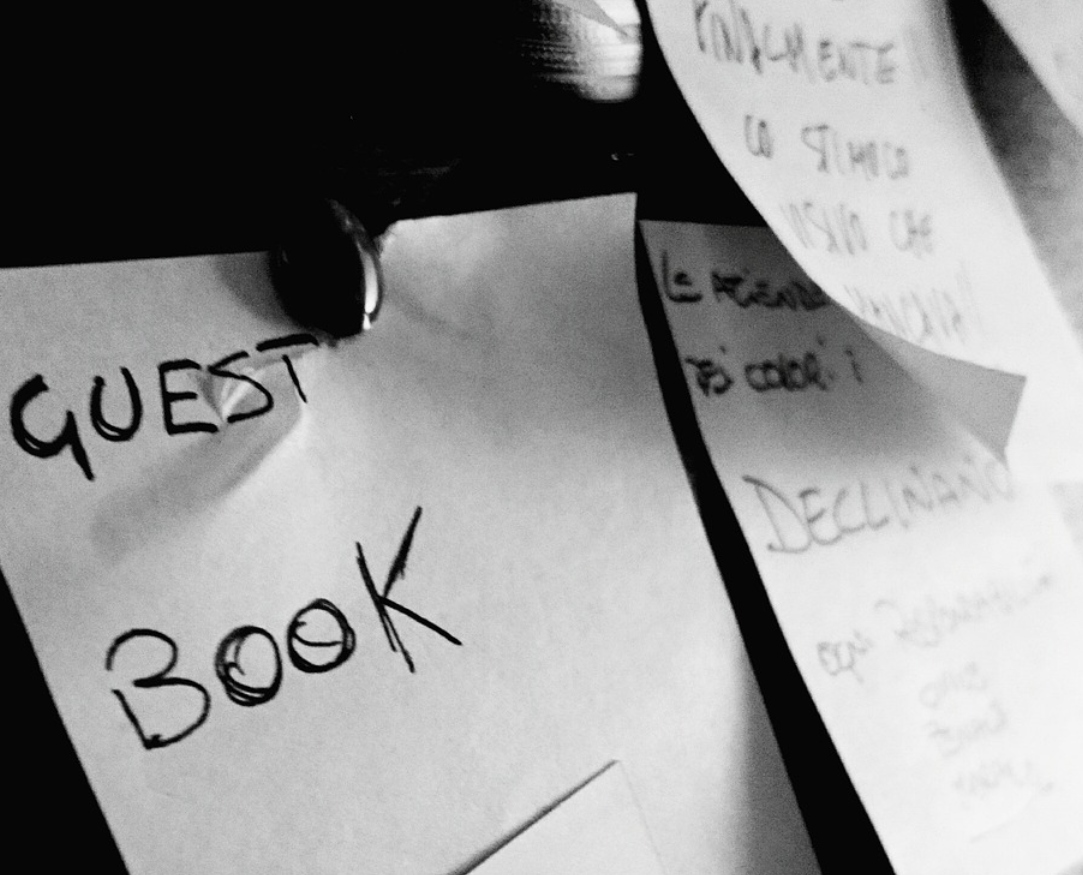One-Hour Writing
By Guest | April 22, 2008 |
 Today’s guest blogger is our friend Eric, who blogs at one of our fave sites, Quantum Storytelling. Enjoy!
Today’s guest blogger is our friend Eric, who blogs at one of our fave sites, Quantum Storytelling. Enjoy!
I give myself one hour to write a scene. Sometimes I can write two, maybe even three scenes in an hour if I’m really on fire. But I only ever expect myself to be able to write one. There’s a hidden benefit to one hour writing, do you know what it is?
If you can’t write your scene inside of an hour, then you most likely have one of two problems that need to be addressed:
- You haven’t really figured out what the scene is about.
- You don’t really know what your story is about, and your story may have problems at the larger level.
The first issue is pretty easy to correct, in my experience.
As I sit down to write a scene, the first thing I do is look at the basic plot point for the scene. “Thomas visits the coffee shop and bumps into Michelle.” That is all fine and good but it may not be enough information for me to sit down and lose myself in the soul of the scene as a writer.
What I would do is quick write some preface notes before taking a crack at the scene. What are these notes? I like to call them the Scene Purpose. The scene purpose can be anything: Showing off a character’s personality trait, flaw, strength, etc.
It can be a logistical one, such as, “I need my protagonist to be hanging out across the street from the bank before the bank gets robbed.” Maybe the point is, as all scenes are in some for or another, to incite conflict. “Thomas is organized, and Michelle is disorganized.” The scene is meant to highlight the frustrating differences between the two people.
Identifying any and all of these is good, because it gives you a shot at honing in on the identity of the scene just before you write it, especially as it’s fresh in your mind. There’s no point in making notes on a what a scene should be about, then stuffing them in a drawer for a month before you actually sit down to write the scene. Okay, you could do that and the notes may still be helpful but you will be much more motivated to dive in and knock that scene out of the park if you warm yourself up with a Scene Purpose session just before you start hammering away on the keyboard.
Now, on to the second and more serious problem.
If you can’t write the scene inside of an hour because you really don’t have much of a clue what your story is about, then finding a scene purpose may be a bit hopeless. You need to go back to Story Development, identify your core themes and how to best illustrate them.
If you’re writing post-apocalyptic (one of my favs) then an easy source of both physical and emotional conflict is strained resources such as food, water, energy in the form of electricity or gasoline, etc. If resource conflicts are a theme or sub-theme of your story then you’re going to need scenes which illustrate that fact. You will also want scenes to show the heroes initially failing a few times and then eventually succeeding, as well as a few scenes showing the villains planning or acting upon their plans to wrest those resources away from the heroes.
Story development is usually pretty fun, and when done properly and used along with a Scene Purpose there should be nothing stopping you from writing a scene or more per hour.
And if you’re cranking out a scene or more per hour then you are well on your way. Good luck with your One Hour Writing!










You said, “Thomas is organized, and Michelle is disorganized.” The scene is meant to highlight the frustrating differences between the two people.
Identifying any and all of these is good, because it gives you a shot at honing in on the identity of the scene just before you write it, especially as it’s fresh in your mind.
I think you’re tapping into a bit of what Robert McKee speaks of in his epic craft book, STORY. McKee, on p 35, talks about scene. He says, “Look closely at each scene you’ve written and ask: What value is at stake in my character’s life at the moment? Love? Truth? What? How is that value charged at the top of the scene? Positive? Negative? Some of both? Make a note. Next turn to the close of the scene and ask, Where is this value now? Positive? Negative? Both? Make a note and compare. If the answer you write down at the end of the scene is the same note you made at the opening, you now have another important question to ask: Why is this scene in my script [novel, etc…]?”
I think if you really understand the value–truth, love, justice, whatever–then you also have a leg-up on plotting your scene out ahead of time, because you can add texture with thematic elements. It’s a scene about justice…okay, I’m going to have a character moving sugar cubes around on the table–a small pile here, one there–kind of mimicking the scales of justice. That sort of thing. I think it can be a very valuable “trick” in a writer’s arsenal.
Thanks for the post, Eric!
I like having a burst of time in the morning to write, too. It makes me get down to the task at hand because I know I only have a limited amount of time available to me.
Usually I visualize what I need to accomplish with the scene the night before. I may not know how it’s going to happen, but I know what I want to happen.
Sometimes it works. Sometimes not.
I think it’s more about the process than the product. Knowing what you want from a scene lets you set about writing it with a certain amount of confidence.
Afterwards, you can make quality judgments to decide if you think you accomplished what you set out to do, or not.
Knowing what you want is half the battle. Prepping before you write the scene is figuring that out. Then all that’s left is production of writing — just like with the overall story.
Pre-produce (story develop) then produce the actual work. I guess that’s a hard proposition for a pantster, but my guess is pantsters spend a lot of time staring at the blank page.
I guess by some definitions that’s a form of preparation. ;-)